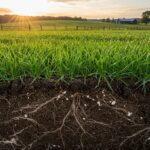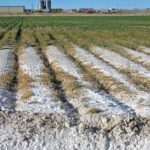Antagonistic fungi represent an effective and natural solution for disease control in agriculture. These microorganisms have the ability to inhibit the growth of pathogenic fungi that affect plants, improving soil health and promoting sustainable crop management. In this article, we will explore what antagonistic fungi are, their benefits, main species, and how to implement them in agricultural systems.
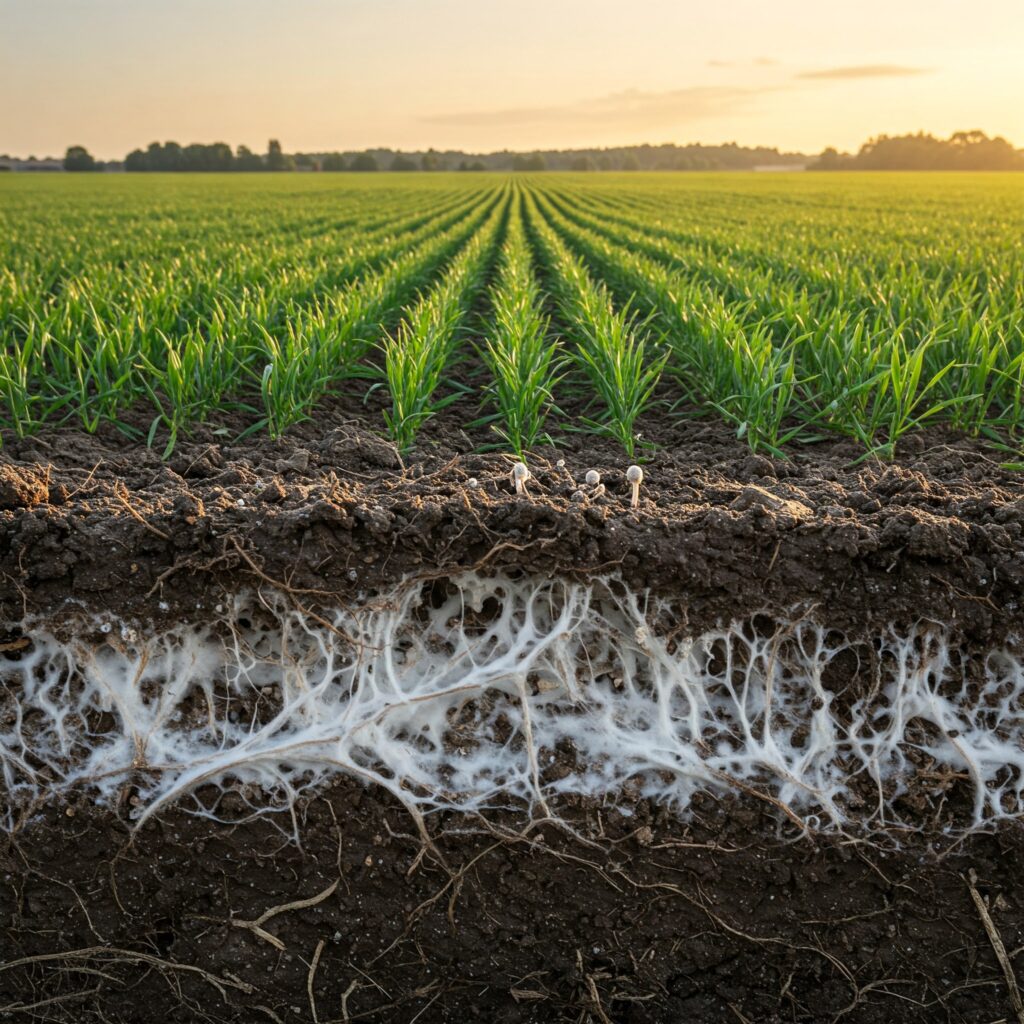
What are antagonistic fungi?
Antagonistic fungi are microorganisms that act against pathogenic fungi through various mechanisms, such as competition for nutrients, the production of antifungal substances, and direct parasitism. This ability allows them to protect the roots and aerial parts of plants against infections.
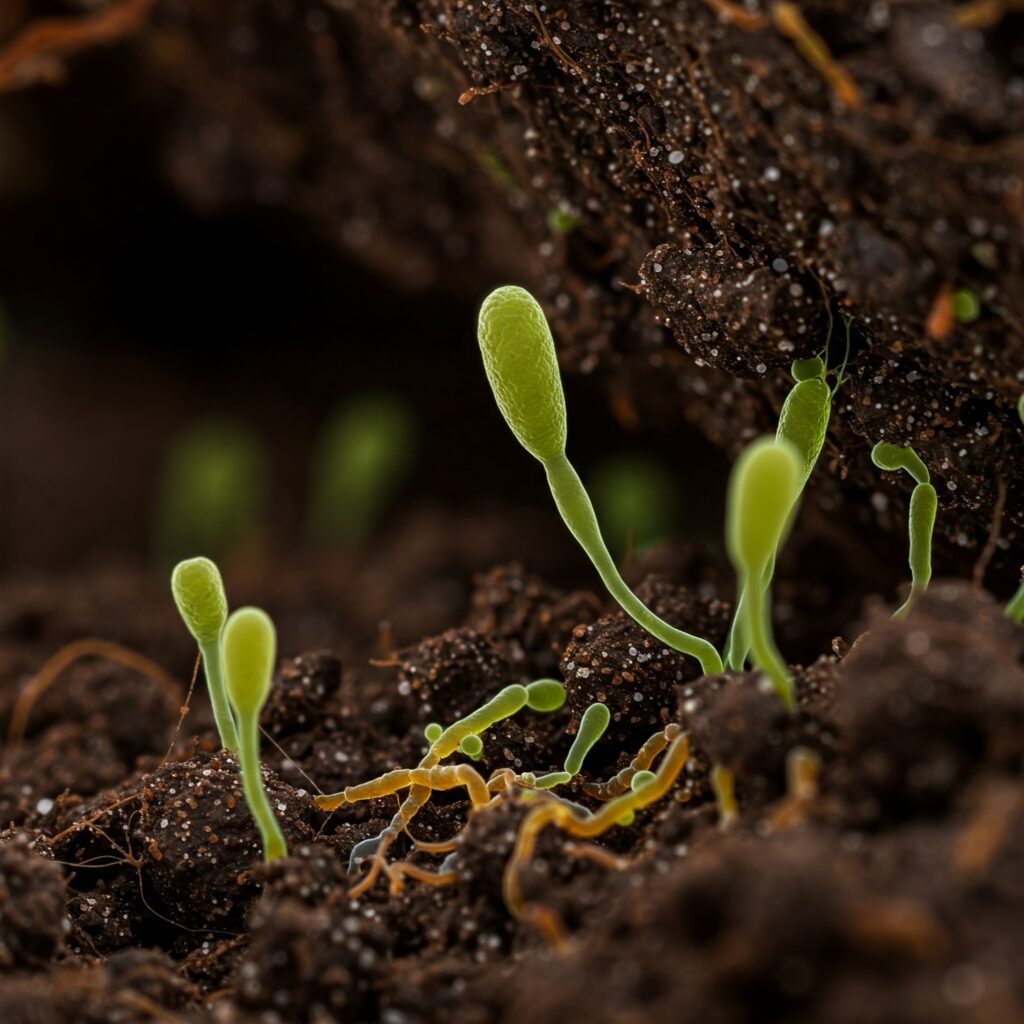
Main species of antagonistic fungi and their characteristics
These are some of the most commonly used antagonistic fungi in agriculture:
- Trichoderma harzianum: Acts against Fusarium, Pythium, and other common pathogens, producing enzymes that degrade the cell walls of harmful fungi.
- Trichoderma viride: Improves soil structure and promotes the control of root diseases.
- Trichoderma asperellum: Increases the systemic resistance of plants against diseases in both roots and leaves.
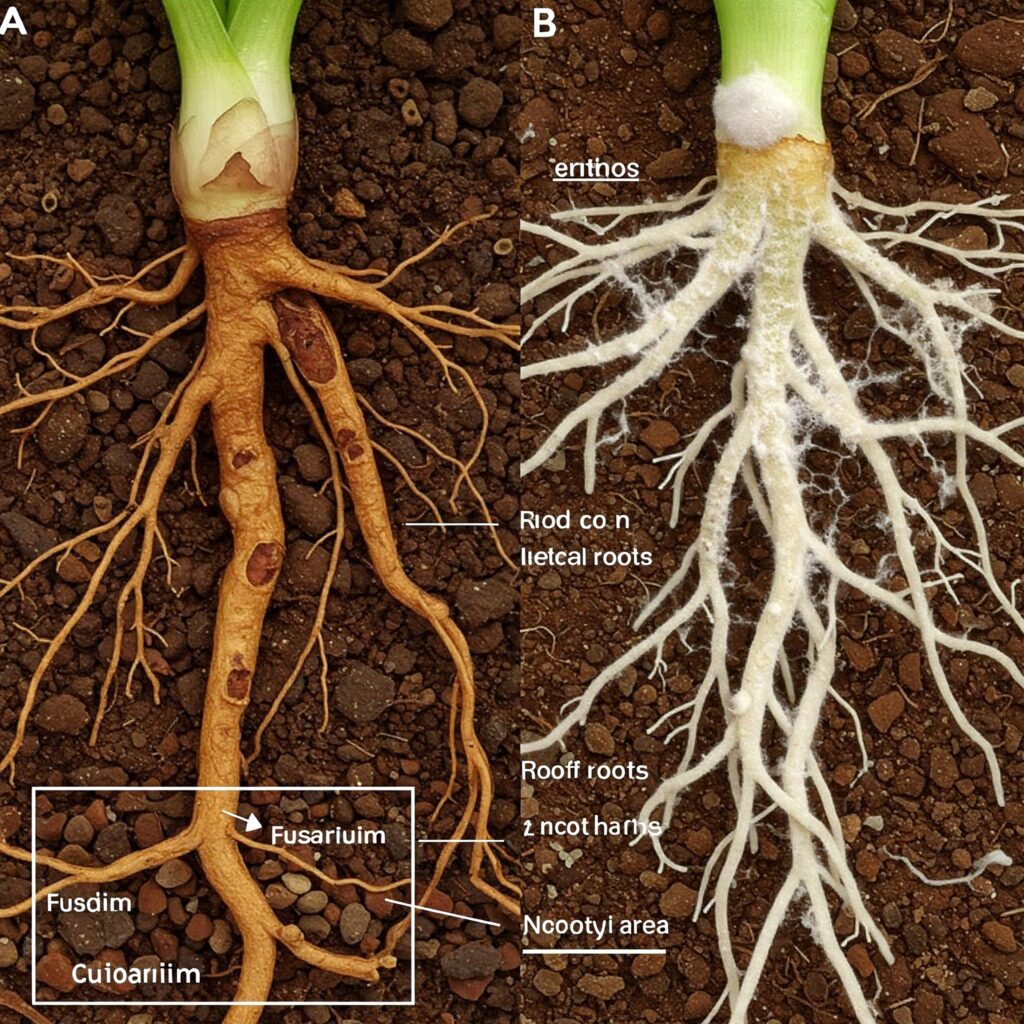
Benefits of using antagonistic fungi in agriculture
Incorporating antagonistic fungi into agricultural management has multiple advantages that favor both productivity and soil health:
- Effective pathogen control: They reduce the incidence of diseases such as fusarium wilt and damping-off.
- Reduction of agrochemicals: By decreasing the reliance on fungicides, more ecological agriculture is promoted.
- Improvement of soil structure: The exopolysaccharides produced by these fungi favor soil aggregation and stability.
- Increase in plant resistance: They stimulate natural defense mechanisms in plants.

Practical implementation in agricultural management
To use antagonistic fungi effectively, they can be applied as seed treatments, in irrigation water, or directly to the soil. It is essential to use commercial products that guarantee the viability of the spores and follow the manufacturer’s recommendations to maximize their effectiveness.
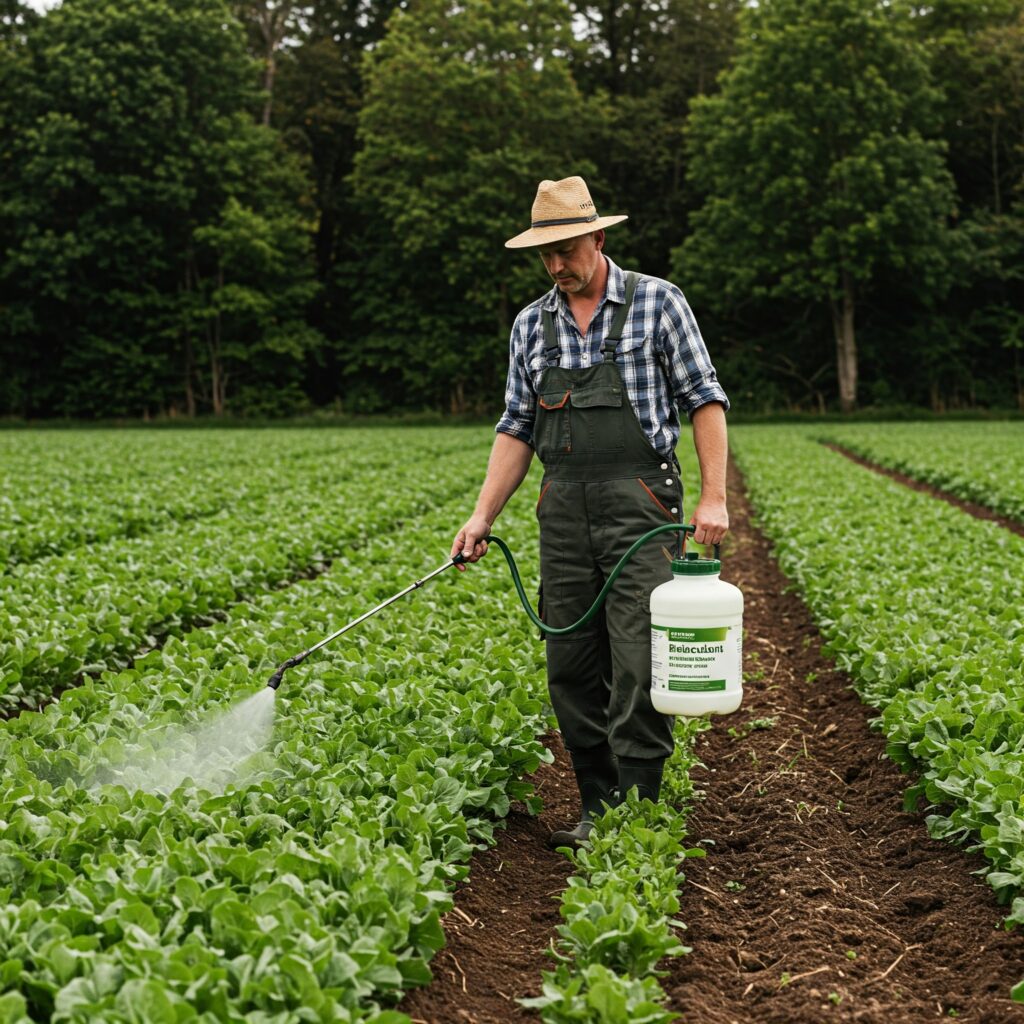
Conclusion
Antagonistic fungi are fundamental allies in the biological protection of crops. Their use not only contributes to the natural control of pathogens but also improves soil quality and promotes sustainable agricultural management that is less dependent on agrochemicals.
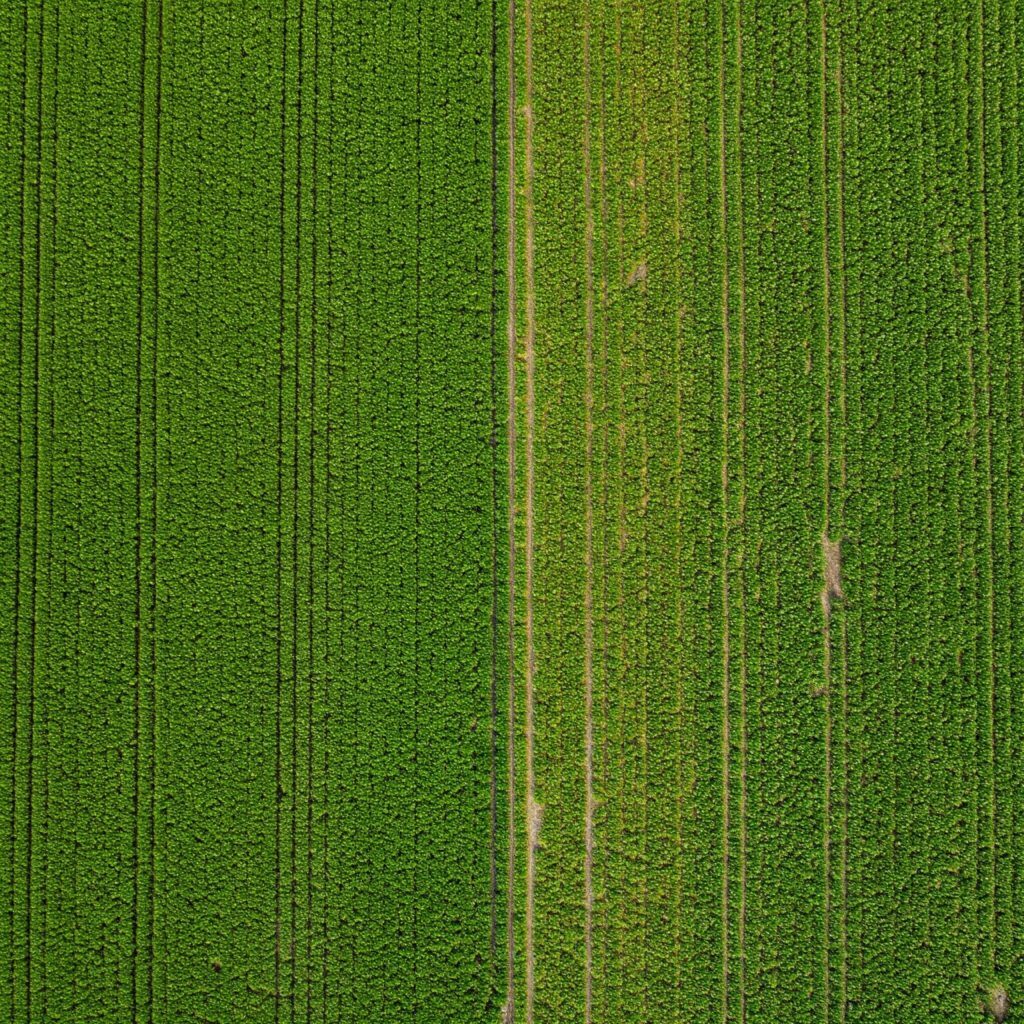
References
- Harman, G. E., & Kubicek, C. P. (2002). Trichoderma and Gliocladium. CRC Press.
- Howell, C. R. (2003). Mechanisms employed by Trichoderma species in the biological control of plant diseases. Plant Disease, 87(1), 4-10.
 AgronoBlog – Agriculture Blog
AgronoBlog – Agriculture Blog 